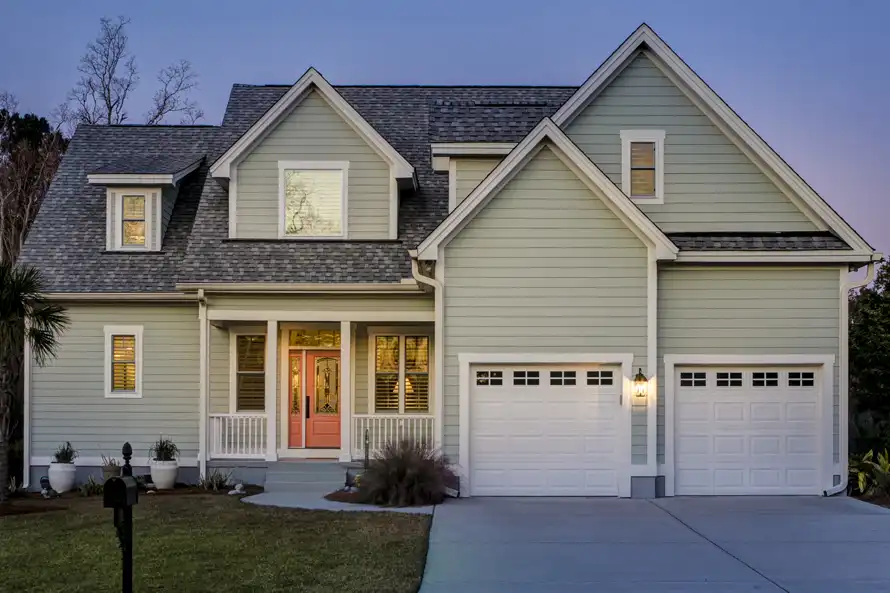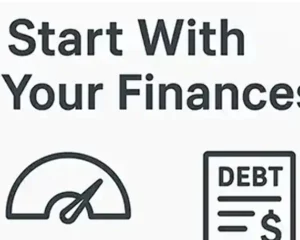How Much House Can I Afford?
Buying a home is one of the biggest financial decisions you’ll ever make, which is why a lot of people get a bit stressed about the process. But before you start browsing listings or touring open houses, you need to answer a crucial question: How much house can I afford? The key is determining a realistic answer to this question so you can set yourself up for financial success and security in your future. Here, we’ll break the question down into simple steps so you can shop for a home confidently and without overextending yourself.
How Much House Can You Afford? Understanding the 28/36 Rule
Many mortgage calculators use a 36% debt-to-income ratio (DTI) to dictate the affordability threshold. This comes from the 28/36 rule, which says you shouldn’t spend more than 28% of your monthly income on expenses related to your home. The 28% comes from pre-tax monthly income. The second half of the rule states that you should spend no more than 36% on debts, which also includes housing costs like a mortgage. So, the two overlap a bit.
28% of your gross monthly income should be the maximum you spend on housing costs (mortgage, property taxes, insurance, etc.).
36% of your gross monthly income should be the max for total debt (housing costs + credit cards, car loans, student loans, etc.).
For example, you earn $6,000 per month before taxes. Your monthly housing expenses shouldn’t exceed $1,680 (6000 x 0.28 = 1680). You take on a home loan with a $1,680 mortgage payment, but then say you have another $600 in debt payments or other expenses. This would bring your total monthly debts and expenses to $2,280.
To see if this falls within the 28/36 rule, you need to divide the total debts and expenses by your pre-tax income (2280 ÷ 6000 = 0.38). This results in your total debt being 38%, which is technically a bit past the guidelines of the 28/36 rule, but it could still be manageable depending on your lifestyle and day-to-day cost of living.
If your housing expenses were $1,700 and your other debts were $200, your total would be $1,900 (1900 ÷ 6000 = 0.31), bringing you to 31% and within the 28/36 rule.
This rule is generally the base point for determining how much house you can afford, but several factors must be considered. For example, you may already have more in savings, or you may have a diversified income from investments. Working with a financial advisor, a real estate agent or broker, and a mortgage lender can help you better understand the specifics of your home’s affordability.
Step-by-Step: How to Find an Affordable Home Price Range
Although the 28/36 rule is a good place to start, you’ll need to calculate its components beforehand to get an accurate answer. This can help you determine what price range you can realistically afford without causing stress or strain in other areas of your life. To do that, just follow these steps:
1. Know Your Monthly Income
Start with your gross (pre-tax) income. If you’re a dual-income household, this will include both salaries. Monthly income can also include any side hustle money, passive income, dividends, or freelance income, as long as it’s consistent. If any additional income streams vary from month to month, it’s better to omit them from your mortgage affordability calculations and enjoy the cash flow for day-to-day life.
2. Add Up Your Monthly Debts
Next, list every single one of your monthly debts. This might include student loan payments, car payments, credit card debt, or personal loans. You should also include interest rates in the debt total to ensure an accurate calculation. This is crucial in figuring out how much home you can afford without increasing your debt-to-income ratio.
3. Estimate Monthly Housing Costs
This can be tricky if you don’t know the home price or mortgage rate from the start. The idea is to figure out the highest amount you can afford without going over budget. This will give you a maximum price range. Your monthly mortgage payment includes more than just the loan amount. It should also include some “hidden costs.” The most common recurring hidden costs you need to be prepared for, which will be factored into your budget and debts, include:
Principal + interest
Property taxes
Homeowners Insurance
Private mortgage insurance (PMI) (if your down payment is under 20%)
HOA fees, if applicable
Utilities and maintenance
Depending on the size of your down payment, you may also have to consider mortgage closing costs. These could be part of your debts if they increase your mortgage loan amount. Moving expenses and any repairs or renovations should also be considered when using a mortgage affordability calculator. This way, you’ll have no surprise bills or expenses waiting for you.
4. Factor in the Down Payment
Your down payment also affects how much home you can afford, and your monthly payments. Some of the most common down payment amounts are:
20%: Ideal. No PMI, better rates.
10%: Solid, but you’ll likely pay PMI.
3–5%: Minimum for many conventional loans (i.e., FHA loans)
0%: Possible for VA loans and USDA loans.
The more you put down, the less you borrow—meaning lower payments and interest over time. If you have money in your savings, this can drastically reduce your monthly debts and give you a bigger budget for housing without breaking the 28/36 rule.
5. Run the Numbers
Use a home affordability calculator to estimate a ballpark figure based on your income, debts, and down payment. But remember—just because the bank says you can doesn’t mean you should. There are several things to consider outside of what the calculator says. For instance, lower interest rates could help increase the amount of home you can afford, along with other details of the loan terms. Working with a great real estate agent can help you get a better understanding of your budget and homes within your price range.
Consider Your Lifestyle and Goals
After finding out how much mortgage you can afford for a new home, you may want to take a pause and consider a few things. Just because a lender approves you for a certain amount doesn’t mean you should borrow the full amount. Rather than max out your monthly expenses, ask yourself a few questions:
Do you want to travel regularly?
Are you planning to grow your family?
Would a higher mortgage limit your savings or flexibility?
Your ideal home budget should leave room for life, not just bills. As your life grows and your needs change, you can always move to a bigger home or one that fits your needs. So, take your time and don’t be afraid to ask your realtor questions during the process.
Get Pre-Approved (But Stay Grounded)
A mortgage pre-approval gives you a clear idea of what a lender is willing to offer, but it’s not a guarantee that it’s the best decision for your finances. Pre-approval can also show sellers that you’re serious about any offers you make. To get pre-approved, start by checking your credit score and gathering all necessary documents. This includes things like:
Pay stubs (last 2–3)
Tax returns (last 2 years)
W-2s or 1099s
Bank statements (last 2–3 months)
Employment verification
ID (like a driver’s license)
Social Security number
Then show around for different lenders. Check for competitive mortgage interest rates, good customer service, and loan options that fit your needs. You can then apply, and if approved, you will receive a pre-approval letter valid for about 60 to 90 days. You can use the letter when you put an offer on a house you’re interested in. If the offer is accepted, you’re in! If not, you can use the letter again on another property.
Pro Tip: Buy What You Can Comfortably Afford
Owning a home should be exciting, not stressful. When you buy within your means, you give yourself the financial freedom to enjoy your home and your life. However, if it feels like a stretch, it probably is. You want to buy a house you can afford now, not one you hope to afford later. To help you better understand your house affordability, partner with one of the real estate agents at First Star Realty. Our seasoned real estate professionals are dedicated to providing exceptional, personalized service to our clients. Call us at 479-267-1600 to get started, or fill out a contact form today.



